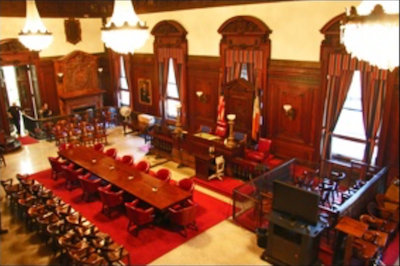What is Probate. What You Need to Know About the Probate Process.

Probate is a legal proceeding that takes place after a person dies in order to determine how their estate is distributed.
The probate process begins when a person who has the will files a petition with the court requesting to verify and admit a deceased’s will as genuine and authentic.
Once the will is admitted for probate, the executor named in the will is appointed by the court.
The executor collects the assets of the estates and pays the debts of the estate.
After that, the deceased’s estate is distributed in accordance with the terms of the will.
In New York, if the deceased dies without a will, the deceased person’s closest living relative files a petition to administer and distribute the assets of the deceased. This is called a petition for administration. The executor’s counterpart, in this case, is called an administrator and the proceeding is not called probate but is called estate administration.
The probate process
The person who is nominated as the executor in the will files a probate petition with the court for the admission of the deceased’s will. When asking what is probate, it is important to know what is a probate petition. The information and supporting documents to be included in the petition are stated in 22 NYCRR 207.16. If the property of the deceased is $50,000 or less with no real estate, the estate of the deceased can be administered under small estate voluntary administration, even if the deceased died with a will. This is a faster, simplified court proceeding that is less complex than a full probate or administration proceeding.
In a probate proceeding, the court will admit the will if it is proven that the will was validly executed in accordance with the requirements set form under NY EPTL § 3-2.1 and that the testator had testamentary capacity at the time he executed the will. In summary, the will must be in writing, signed at the end by the testator or by another person in the testator’s presence, witnessed by at least two competent witnesses who can both attest in the attestation clause that the testator’s signature was affixed in their presence and that the testator declared to each of the attesting witnesses that the instrument he signed is his will.
It is always recommended to avoid DIY wills from the internet and to execute a will under the supervision of an attorney in order to avoid will contests. Wills are presumed to be validly executed when executed under the supervision of an attorney. In Re: Estate of Doody, 79 A.D.3d 1380 (2010).
Requirements for a probate petition
A probate petition must contain the names and addresses of the deceased’s distributees. EPTL § 1-2.5 defines a distributee as “a person entitled to take or share in the property of a decedent under the statutes governing descent and distribution.” The distributees are the deceased’s next of kin who stand to inherit under the laws of intestacy if the deceased died without a will. EPTL § 4-1.1 provides the relatives who shall be the distributees of the deceased. Generally, if the deceased is survived by a spouse and/or children, they are the distributees. In the absence of the spouse and descendants, the parents are the distributees. If there are no parents, then the deceased’s siblings are the distributees. If there are no siblings, the estate goes to the grandparents. These rules apply in case the deceased dies without a will. If the deceased dies with a will, the provisions of the will apply.
Still, the distributees must be named in the probate petition, even if they receive nothing in the will, because they are necessary parties. The distributees stand to inherit in case the will is not admitted for probate, and they have the standing to contest the will’s validity. These distributees can sign a waiver, consenting to the admission of the will and the appointment of the executor. If they refuse to sign a waiver and consent, the distributees will be served with a citation notifying them that the executor has filed for authority to manage the deceased’s estate in accordance with the terms of the will and directing the distributees to appear before the court. The citation gives the court jurisdiction over the distributees and grants the court authority to determine the rights of the people involved. If there are distributees who refuse to sign the waiver and consent, one may expect the probate proceeding to take longer. For this reason, an executor may petition the court for the issuance of preliminary letters testamentary to administer the estate of the deceased, pending the admission of the will for probate. Usually, the issuance of preliminary letters testamentary contains restrictions and limitations that give the preliminary executor authority to promptly manage the deceased’s estate, while at the same time, protecting the interests of the distributees.
Once the will is admitted for probate, an executor is appointed with the issuance of letters testamentary. The letters testamentary is a document that the executor can show to banks, financial institutions, government agencies, and other persons, so the executor may be granted access to bank accounts and other properties of the deceased. The executor is then required to make an inventory of all the property of the deceased. The executor shall also pay for the deceased’s debts, file the necessary tax returns, provide the beneficiaries with an accounting, and distribute the remaining proceeds to the beneficiaries in accordance with the will’s provisions.
Although a probate petition can be filed pro se (without the assistance of a lawyer), it is recommended that one undertakes this process with the help of an experienced probate lawyer in order to save time and resources so that one may access the properties of the deceased at the soonest possible time. If you are at a level of understanding where you are asking what is probate, it is likely that you need to be represented by an attorney.
Probate assets
Probate assets are assets that are solely owned by the deceased or without a beneficiary designation. When people ask what is probate, they sometimes refer to probate assets. These assets are included in the inventory of the executor in determining which assets will be distributed to the beneficiaries after payment of the deceased’s debts and other expenses. Although probate assets normally refer to assets to be distributed under the will, probate assets are the same type of assets that are included in an administration proceeding for distribution when the deceased dies without a will. For this reason, for purposes of assets, probate assets are used both for probate and administration proceedings in determining which assets should be included in the inventory of the deceased.
Non-probate assets, on the other hand, are assets that are owned by the deceased jointly with others or those with a beneficiary designation that transfer to the beneficiary upon the deceased’s death by operation of law. Examples of non-probate assets are trust properties, bank accounts with a named beneficiary, retirement accounts, life insurance policies, and jointly held savings accounts.
Most mid to high-net worth individuals prefer to plan their estate to avoid probate. The re-characterization of an asset as non-probate ensures that loved ones immediately gain access to the properties of the deceased without going through the expensive and lengthy process of probate or administration. The most common way of turning a probate asset into a non-probate asset is by adding a beneficiary or putting the property into a trust. To make sure the trust is effective, the individual creating the trust must transfer title of the property to the trust by transferring the property to the trustee, as trustee of the trust.
For example, real estate that is titled in the name of John Doe, as a trustee of ABC Trust is considered a non-probate asset. Even if John Doe was both the grantor (or creator of the trust) and the trustee, upon John Doe’s death, that real estate will not be included in the properties to be transferred via will or administration. Such property will be transferred under the terms of the trust.
Some people make the mistake of listing properties in the trust agreement to be considered as trust properties, but not taking the additional step of actually transferring the property to the trustee, as trustee of the trust. Without this actual transfer, the property remains a probate asset and will be distributed in accordance with the provisions of the will or administration proceeding.
Still, even if some properties are converted into non-probate assets through a revocable trust, proper estate planning still requires the execution of a will to account for residual properties that were not converted into non-probate assets. These pour-over wills intend to catch all property that was not transferred into the trust.
Probate is a complicated process that requires the assistance of a lawyer. If you are asking what is probate, then you likely require representation by an attorney. Doing probate right the first time ensures that one can access the estate at the earliest possible time. If you need legal representation in any probate matter or would like to plan your estate efficiently, we at the Law Offices of Albert Goodwin, are here for you. We have offices in New York City, Brooklyn, NY and Queens, NY. You can call us at 212-233-1233 or send us an email at [email protected].
